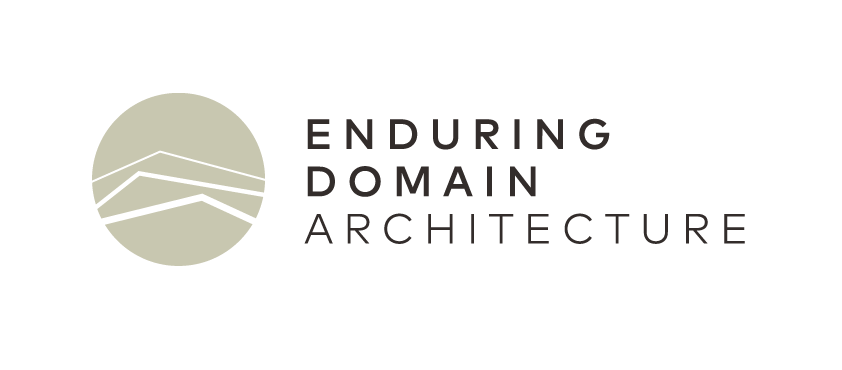
16 Jan How far have we really come? Evolution of technology vs stagnation of housing design
So the offices of Enduring Domain are back in full swing for 2015 after a well-deserved Christmas break. It had been ten years since my last road trip to Queensland and apparently that was enough time to forget about what a mind-numbing (and derrière numbing) task it is to drive around 4500km in a two week period, listening to the same 1990’s cassettes over and over.
However, the long hours on the road this time were constructively spent admiring the traditional building types found through inland New South Wales and up into the Sunshine Coast Hinterland. Whether it be the homestead out on the farm with its wide verandahs and big roof to keep the sun and rain out, or the pub in town built from brick and stone, a place to cool off after a hard days work. Or the grandiosity of the town hall and bank, enduring reminders of the prosperity of days gone by.
There was a period in the history of Australia’s built environment where buildings were made sturdy and durable. The materials were from a palette hewn from the land around them, hardwood timber, stone and bricks made from the earth. They were designed to withstand the extremes of climate and provide comfort for the users. Distinct building typologies evolved such as ‘the Queenslander’ which became synonymous with hot and humid climate architecture.
We didn’t have reverse cycle air-conditioning, we didn’t have central heating, we didn’t have double-glazing, we didn’t have fancy specialist architects, yet the form and function of our buildings adapted and refined themselves into what we would now refer to as regional vernacular architecture, something to be studied and admired and hopefully learned from.
Evolution of the motor vehicle, from this 1950s fuel-guzzling Mercedes Benz to the aerodynamic electric hybrid such as the Prius.
Yet with this surely noble foundation to draw upon, and the time tested experience of multiple generations living and working in these buildings, why are the homes that we build today en-masse so bereft of the wisdom we have supposedly accumulated? We apply technology to empirical knowledge to enhance and develop almost all other tools for modern day living, such as the motor vehicle, the smart phone, home appliances, yet our homes have regressed in a lot of ways, or stagnated at best.

Left, The Man From Snowy River House, the epitome of high country vernacular. Right, so-called progress of todays mass-produced housing. In 100 years’ time will they be as venerated as the Melbourne terrace house?
Sure, energy efficiency standards have been legislated so that all new homes require a 6-star energy rating and use of either a water tank or solar hot water service. But homes are getting bigger, more materials are being used, and these materials contain higher embodied energy in their manufacture. Despite this benchmark level of energy efficiency, the modern home consumes more energy than ever before as reverse cycle air-conditioning and central heating have become expected standard inclusions, TVs have become bigger, and a suite of electrical gadgets occupy all available power outlets.

Left, a typical Australian suburban street, the same housing type being replicated all over the country, regardless of climate, topography or history. Right, site specific, climate specific, occupant specific design. Photo courtesy Unicorn Architecture.
So how far have we really come? When we continue to perpetuate the catalogue house type with no respect to the simplest of design issues: orientation, shading, thermal mass and insulation, we can jump on all the bandwagon’s we like about ‘upcycling’ this and ‘re-purposing’ that. Until there is a real philosophical shift in the way we view home design and a deeper understanding that a building does not sit in isolation of its environment, then we continue to consume energy at an exponential rate all the while living in uncomfortable homes only made tolerable by turning on the air-conditioning and closing all the blinds.
Terms such as ‘environmentally sustainable design’ and ‘energy efficient design’ in most cases are nothing more than marketing expressions overused by the building industry and the work that myself and my colleagues do continues to be seen as niche and even regressive by those that have never experienced the joy of a truly environmentally integrated abode.




Jesse Dawkins
Posted at 01:02h, 17 JanuaryWell said Matt. The other thing about these housing developments is that is no room for a garden anymore, therefore, little room for large trees to grow to provide shade, cooling and amenity. It’s hard to imagine any large trees reaching maturity in these developments because their canopy will almost always be directly over a roof and, presumably, be cut down through paranoia because they may occasionally drop a limb. It will be like living in a mass solar array power station!
Matt Turner
Posted at 21:08h, 18 JanuaryGood point Jesse. And existing trees are the first things to go in new housing developments. And no room for backyard cricket anymore either!
Hamish
Posted at 01:08h, 05 AugustVery glad my curiosity in the phantom rider lead me to this blog, as I rode through the new growth, growth, growth suburb of Lucas and whatever else that sprawl is going to be called, I could not help but vent my disgust at the modern suburban prisons that do nothing but provide a new form of disposable asset, the home. So much talk about our improved standard of living, what a joke. We as a nation are selling out to the incessant short-term greed of the coalition government that praises consumption on an increasingly rapid rate. So hurry up and ‘eat what’s left before someone else does’ is the philosophy, over population is where it starts and ends.
Congratulations on the great website Matt, now submit a tender for the next Ballarat subdivide for some attractive, sustainable, and practical mass-produced housing and we’ve got at least some saving grace.
Matt Turner
Posted at 02:48h, 05 AugustThanks for your comment Hamish, and very well put too I may add. Its hard to blame the average home buyer though for the proliferation of these housing suburbs. The land developers and mass home builders offer financially attractive house and land packages and they just make it easy for people to get into a new home. However too much emphasis is put on ease and expediency of construction, and maximising plot ratios in order for these developers to continue to thrive, rather than leaving high quality legacies for many future generations to live comfortably and sustainably. I wonder if the developers and building company directors are living in the likes of Lucas housing estate?